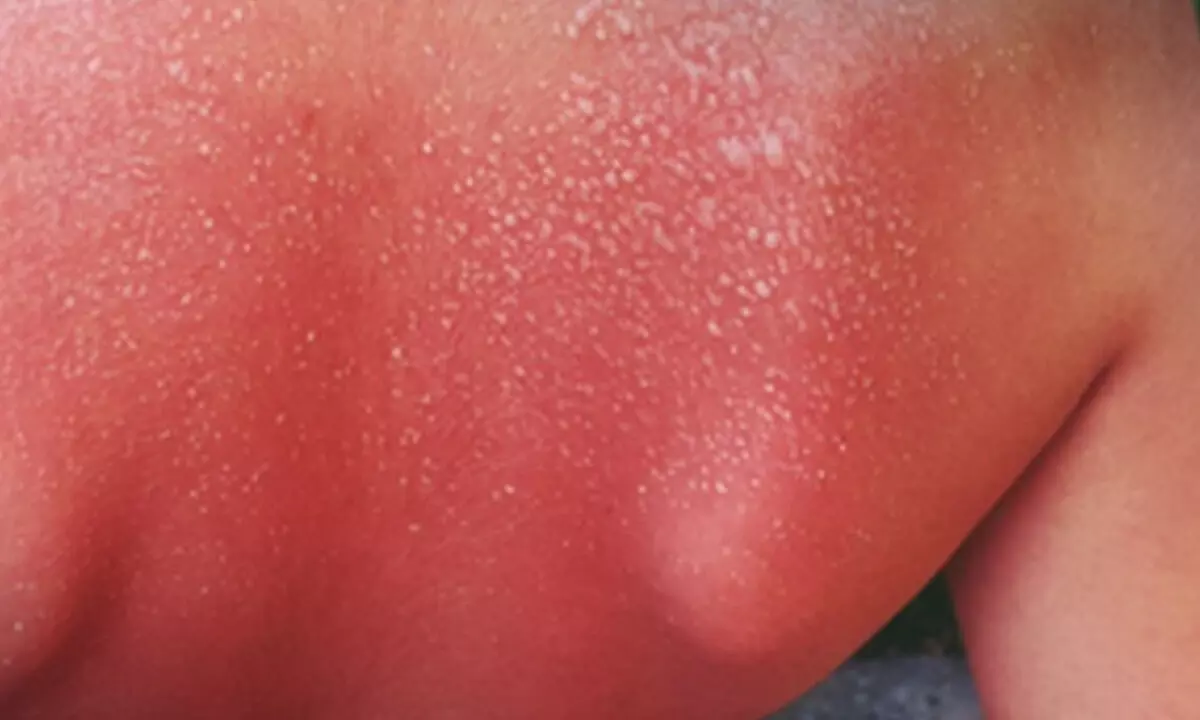Live
- Miscreants attack Dharmasala MLA Himanshu
- Salman Khan’s ‘Biwi No 1’ to Re-Release on November 29
- 7 kg ovarian tumour removed
- Worker dies under a heap of cotton
- Polling begins for PAC elections in Andhra Pradesh assembly
- War 2: Shraddha Kapoor Joins Hrithik Roshan and Jr NTR for a Dance Number
- Garena Free Fire MAX Redeem Codes for November 22: Booyah Champ Faded Wheel Event
- Call to take preventive measures to check cybercrimes
- RAPO22: Bhagyashri Borse Cast Opposite Ram Pothineni in P Mahesh Babu's Upcoming Film
- Gold rates in Delhi today surged, check the rates on 22 November, 2024
Just In

Scientists have developed a synthetic, biomimetic melanin cream that heals damage occurring throughout the day when your skin is exposed to sunlight or environmental toxins.
New York: Scientists have developed a synthetic, biomimetic melanin cream that heals damage occurring throughout the day when your skin is exposed to sunlight or environmental toxins.
In the new study, the scientists at Northwestern University showed that their synthetic melanin, mimicking the natural melanin in human skin, can be applied topically to injured skin, where it accelerates wound healing.
These effects occur both in the skin itself and systemically in the body.
When applied in a cream, the synthetic melanin can protect skin from sun exposure and heals skin injured by sun damage or chemical burns, the scientists said.
The technology, published in the journal npj Regenerative Medicine, works by scavenging free radicals, which are produced by injured skin such as a sunburn.
Left unchecked, free radical activity damages cells and ultimately may result in skin ageing and skin cancer. Melanin in humans and animals provides pigmentation to the skin, eyes and hair.
The substance protects your cells from sun damage with increased pigmentation in response to sunlight -- a process commonly referred to as tanning.
That same pigment in your skin also naturally scavenges free radicals in response to damaging environmental pollution from industrial sources and automobile exhaust fumes.
When the scientists created the synthetic melanin engineered nanoparticles, they modified the melanin structure to have higher free radical scavenging capacity. "The synthetic melanin is capable of scavenging more radicals per gram compared to human melanin," said Nathan Gianneschi, Professor of Chemistry, Materials Science & Engineering, Biomedical Engineering and Pharmacology at Northwestern.
"It's like super melanin. It's biocompatible, degradable, nontoxic and clear when rubbed onto the skin. In our studies, it acts as an efficient sponge, removing damaging factors and protecting the skin."
Once applied to the skin, the melanin sits on the surface and is not absorbed into the layers below. "The synthetic melanin stabilises and sets the skin on a healing pathway, which we see in both the top layers and throughout the body," Gianneschi said.
The scientists, who have been studying melanin for nearly 10 years, first tested their synthetic melanin as a sunscreen. "It protected the skin and skin cells from damage," Gianneschi said.
"Next, we wondered if the synthetic melanin, which functions primarily to soak up radicals, could be applied topically after a skin injury and have a healing effect on the skin. It turns out to work exactly that way."
The team envisions the synthetic melanin cream being used as a sunscreen booster for added protection and as an enhancer in moisturiser to promote skin repair.
"You could put it on before you go out in the sun and after you have been in the sun. In both cases, we showed reduction in skin damage and inflammation. You are protecting the skin and repairing it simultaneously. It's continuous repair," said dermatologist Dr. Kurt Lu, Professor of Dermatology at Northwestern University Feinberg School of Medicine.

© 2024 Hyderabad Media House Limited/The Hans India. All rights reserved. Powered by hocalwire.com






